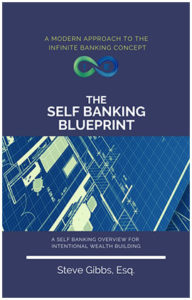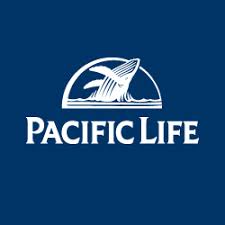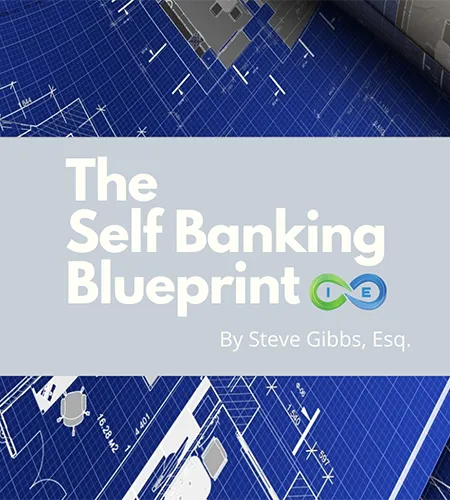Are you tired of paying life insurance premiums year after year? Imagine having permanent life insurance coverage without the ongoing payment obligation. That’s exactly what paid-up life insurance offers – financial protection for your loved ones with no more premiums to pay.
Whether you’re planning for retirement, looking to optimize your estate planning, or simply seeking ways to maximize your financial efficiency, understanding paid-up life insurance options can provide valuable solutions to your long-term financial strategy.
In this comprehensive guide, we’ll explore everything you need to know about paid-up life insurance policies – from how they work and the different types available to tax implications and growth strategies. We’ll cover reduced paid-up options, limited pay structures, single premium policies, and how paid-up additions can supercharge your policy’s performance.
Table of Contents
- What is Paid-Up Life Insurance?
- Key Benefits of Paid-Up Life Insurance Policies
- Different Types of Paid-Up Life Insurance
- Converting Whole Life Insurance to Paid-Up Status
- Paid-Up Additions Rider: Maximizing Policy Growth
- Using Paid-Up Life Insurance for Retirement Planning
- Tax Implications of Paid-Up Life Insurance
- Caution: Modified Endowment Contracts (MEC)
- Comparing Paid-Up Life Insurance to Other Financial Products
- Eligibility Requirements for Paid-Up Status
- Cash Value Growth Strategies in Paid-Up Policies
- Next Steps: Is Paid-Up Life Insurance Right for You?
What is Paid-Up Life Insurance?
A paid-up life insurance policy is one where no further premium payments are needed to keep the policy in force. When your life insurance becomes paid-up, you can benefit from the continued growth of the policy’s cash value without needing to pay additional premiums to keep it active. For properly structured dividend-paying whole life policies, both the cash value and death benefit will continue to grow even after reaching paid-up status.
There are several scenarios that can result in a paid-up life insurance policy, but what it boils down to is that the insurance company has already received all required insurance payments for the policy to remain in force. This allows the policyholder to enjoy the benefits of life insurance coverage without making any additional payments.
While other insurance products can be set up to stay effective without additional premiums, the term “paid-up” is typically applied to permanent life insurance, particularly participating whole life insurance policies. The key ingredient that enables life insurance to become paid-up is the cash value component.
Key Benefits of Paid-Up Life Insurance Policies
Paid-up life insurance offers several advantages that make it an attractive option for long-term financial planning:
- No more premium payments required while maintaining coverage
- Continued cash value growth potential
- Tax-deferred growth of policy values
- Access to policy cash value through withdrawals or loans
- Potential dividend payments that can further increase policy value
- Simplified estate planning with guaranteed death benefit
- Protection from market volatility compared to other investment vehicles
Different Types of Paid-Up Life Insurance
Understanding the various types of paid-up life insurance options can help you determine which approach best suits your financial goals and circumstances.
Reduced Paid-Up Life Insurance
Converting a whole life insurance policy to reduced paid-up status represents a compromise between surrendering the policy outright for cash and continuing to pay premiums on life insurance that might no longer be necessary. With a reduced paid-up policy, you use the existing cash value to purchase a paid-up policy with a lower initial death benefit.
The primary benefit of reduced paid-up life insurance is that you no longer need to make premium payments, while your policy continues to earn interest and dividends. These earnings continue to grow your policy’s cash value and death benefit over time. You can still access your cash account tax-free by borrowing from the insurance company using your cash value as collateral. If you choose not to repay the loan, it will simply be deducted from the death benefit when you pass away.
Key Features of Reduced Paid-Up Insurance:
- No more premium payments required
- Lower initial death benefit compared to the original policy
- Continued growth through interest and potential dividends
- Maintained access to cash value through policy loans
- Simple solution for those who can no longer afford premiums but want to maintain coverage
Limited Pay Life Insurance
Limited pay life insurance policies represent an interesting variation on paid-up whole life insurance. These policies become paid-up at a predetermined period, either after a specific number of years (10-pay, 15-pay, or 20-pay) or when the insured reaches a certain age (such as 65).
The concept behind limited pay policies is straightforward: in exchange for making higher premium payments during your working years (thereby building up cash value faster), you eliminate premium payments during retirement without reducing the death benefit your heirs will receive.
The cash value remains available as an emergency fund or for policy loans. However, if you decide to surrender the policy for its cash value, premium payments might resume. Alternatively, the death benefit could be reduced if you fail to repay a loan against the policy.
Benefits of Limited Pay Life Insurance:
- Predictable premium payment period
- No premiums due during retirement years
- Faster cash value accumulation compared to traditional whole life
- Guaranteed death benefit remains intact without additional payments
- Excellent option for retirement planning and legacy creation
Single Premium Life Insurance
Single premium life insurance makes sense when you want to put a large lump sum into a policy because your main focus is on the death benefit. This approach is typically chosen by individuals looking to leave a death benefit for estate planning purposes. There are two other common scenarios where single premium life insurance is particularly beneficial:
Long-Term Care Considerations
Certain hybrid life insurance with long-term care insurance policies can be designed as single premium policies. This allows you to make a one-time lump sum payment in exchange for a long-term care benefit available throughout your lifetime, plus a death benefit if the long-term care benefit isn’t fully utilized.
Survivorship Life Insurance
Second-to-die life insurance as a single premium paid-up policy is beneficial for estate planning, providing liquidity for the estate and funds to pay potential estate taxes. Also known as survivorship life insurance, these policies pay out when the second person on the policy passes away.
THE ULTIMATE FREE DOWNLOAD
The Self Banking Blueprint
A Modern Approach To The Infinite Banking Concept

Converting Whole Life Insurance to Paid-Up Status
The process of converting a whole life policy to paid-up status is relatively straightforward, but there are important considerations to keep in mind. Here’s how paid-up life insurance works:
- After keeping a whole life policy in place long enough, its cash value reaches a point where it can cover future premiums.
- When that threshold is reached, you can elect to have the insurance company treat the policy as paid-up.
- Each month thereafter, the company pays the premiums for the life insurance coverage from the cash account.
- The policy stays in force, but you no longer make payments because premiums are being paid from the policy’s own cash value.
The primary drawback of using cash value to convert your whole life insurance policy to paid-up status is that each premium payment reduces both the cash value and eventually the death benefit paid to your beneficiary. The decrease works similarly to making a withdrawal from the cash account and using the money to pay the premium yourself.
Importantly, though, the savings component of the whole life insurance policy earns guaranteed returns, resulting in a cash value greater than just the aggregate percentage of premiums applied to savings. With a policy in paid-up status, this growth helps offset reductions to the death benefit.
Using paid-up life insurance can be an effective strategy to keep retirement expenses down while still ensuring a death benefit for your heirs and maintaining liquidity in your estate. When the death benefit is eventually triggered, the payout will be the policy’s face value minus any reductions resulting from the application of cash value to premium payments.
Paid-Up Additions Rider: Maximizing Policy Growth
Overfunded whole life insurance policies often include riders permitting the purchase of paid-up additions through voluntary supplemental premium payments. A paid-up additions rider allows you to put more cash into your policy to buy additional paid-up life insurance, rather than using all your premium payment for the base premium that purchases the death benefit.
For those seeking a high cash value whole life insurance policy, paid-up additions allow you to fund the cash value account faster. This provides more early cash value in the policy as your premium payments go towards funding paid-up additional insurance.
What Are Paid-Up Additions?
Paid-up additions are supplemental life insurance purchased using dividends earned on an existing whole life policy or through additional premium payments. The purchase of additional life insurance using dividend payments does not require evidence of insurability.
Life insurance dividends are annual payments issued by mutual life insurance companies to policyholders based upon the company’s performance. Though technically not guaranteed, some companies have paid dividends so consistently over the years that they are all but certain.
For tax purposes, whole life insurance dividend payments are treated as if the mutual life insurance company refunded a portion of the premiums you already paid, making dividends non-taxable income.
Benefits of Paid-Up Additions:
- Increase both cash value and death benefit
- No additional underwriting or evidence of insurability required
- Create compound growth as paid-up additions earn their own dividends
- Accelerate cash value accumulation in early policy years
- Provide flexibility in how much additional money you put into the policy
- Offset potential death benefit reductions in paid-up policies
Think of paid-up additions like smaller, pre-paid policies attached to your whole life insurance policy. Regular premiums are still due for the underlying policy, but the additional coverage is yours as soon as the dividend is applied – with nothing further owed.
The additional benefit is that the cash value of the paid-up addition earns interest and more dividends, both of which are tax-deferred, providing a true compound interest account. Like the primary policy itself, paid-up additions can be surrendered for their cash value or borrowed against.
Using Paid-Up Life Insurance for Retirement Planning
Paid-up life insurance policies offer unique advantages for retirement planning that many traditional retirement vehicles cannot match. Understanding how to effectively integrate these policies into your retirement strategy can provide significant benefits.
Retirement Income Strategies with Paid-Up Policies
As you approach retirement, having a paid-up life insurance policy offers multiple options for supplementing your retirement income:
- Policy Loans: Borrow against your cash value without tax consequences as loans are not considered taxable income
- Partial Surrenders: Take out portions of the cash value to fund retirement expenses
- Dividend Payments: Use dividend payments as retirement income rather than reinvesting them
- Reduced Paid-Up Option: Convert to a smaller paid-up policy and access some cash value
The advantage of using paid-up life insurance for retirement planning is that it provides tax-advantaged growth during your working years and tax-free access to funds during retirement while maintaining a death benefit for your heirs.
Integrating with Other Retirement Accounts
A paid-up life insurance policy works well alongside traditional retirement accounts like IRAs and 401(k)s. While qualified retirement plans often have required minimum distributions (RMDs) after age 72, paid-up life insurance has no such requirements, allowing for greater flexibility in retirement income planning.
For those who have maximized contributions to qualified plans, paid-up life insurance offers an additional tax-advantaged option for retirement savings without contribution limits.
Want to see how this strategy could work with your specific numbers? Our Pro Client Guides offer complimentary strategy sessions to help you explore your options.
Tax Implications of Paid-Up Life Insurance
Understanding the tax advantages of paid-up life insurance can help you maximize the benefits of your policy while minimizing tax liability.
Tax-Free Growth
The cash value in a paid-up life insurance policy grows on a tax-deferred basis. Unlike investments in taxable accounts, you won’t pay annual taxes on the interest, dividends, or capital gains that accumulate within your policy.
Tax-Free Access to Cash Value
When properly structured, you can access the cash value of your paid-up life insurance policy without triggering tax consequences through policy loans. These life insurance loans use your cash value as collateral and are not considered taxable income by the IRS, providing a tax-free income source during retirement.
Income Tax-Free Death Benefit
The death benefit from a life insurance policy is generally received income tax-free by your beneficiaries. This provides a significant advantage for estate planning purposes, allowing you to transfer wealth to the next generation without income tax consequences.
Estate Tax Considerations
While the death benefit is income tax-free, it may be included in your taxable estate if you retain incidents of ownership in the policy. Proper estate planning techniques, such as the use of irrevocable life insurance trusts (ILITs), can help minimize potential estate tax implications.
THE ULTIMATE FREE DOWNLOAD
The Self Banking Blueprint
A Modern Approach To The Infinite Banking Concept

Caution: Modified Endowment Contracts (MEC)
When designing a policy intended for paid-up life insurance, caution must be exercised regarding how many payments must be made. If you don’t adhere to the rules set by the Internal Revenue Code, you risk creating a Modified Endowment Contract (MEC) rather than a cash value life insurance policy.
Cash value life insurance requires that the policy meet the guidelines of section 7702 of the Internal Revenue Code. Basically, the policy must adhere to the 7-pay test criteria outlined in the code, or it will be considered a modified endowment contract and lose some of the benefits under Section 7702.
The primary concern with MECs is that they lose the favorable tax treatment for policy loans and withdrawals. With a MEC:
- Policy loans and withdrawals are taxed on a last-in-first-out (LIFO) basis
- Earnings withdrawn are subject to ordinary income tax
- Withdrawals made before age 59½ may incur a 10% tax penalty
Working with an experienced life insurance professional can help ensure your policy is structured properly to avoid MEC status while maximizing the benefits of paid-up life insurance.
Comparing Paid-Up Life Insurance to Other Financial Products
When evaluating paid-up life insurance as a financial tool, it’s important to understand how it compares to other common financial products and strategies.
Paid-Up Life Insurance vs. 401(k)/IRA
Tax-Deferred Growth
Tax-Free Withdrawals
Required Minimum Distributions
Contribution Limits
Death Benefit
Market Risk
Paid-Up Life Insurance vs. Annuities
Tax-Deferred Growth
Death Benefit
Guaranteed Income
Access to Principal
Long-Term Care Options
The right financial product depends on your specific goals, risk tolerance, and overall financial situation. Paid-up life insurance offers unique benefits that traditional investment vehicles cannot match, particularly for those concerned with tax efficiency, protection from market volatility, and leaving a legacy.
Eligibility Requirements for Paid-Up Status
It’s important to understand that paid-up life insurance only works if allowed by the policy terms and only if sufficient cash value has accrued to cover the premiums. Here are the key requirements and considerations for policy eligibility:
Policy Type Considerations
Not all life insurance policies can become paid-up. Term insurance, for example, has no cash value and therefore cannot be converted to paid-up status (although some return of premium life insurance policies have limited options).
Permanent life insurance policies such as whole life, universal life, and variable universal life may offer paid-up options, but the specific terms vary by company and policy.
Cash Value Requirements
For a policy to be eligible for paid-up status, it must have accumulated sufficient cash value to support the conversion. The exact amount required depends on:
- The insured’s attained age
- The face amount of the policy
- The specific terms and conditions of the policy
- The type of paid-up option selected (reduced paid-up vs. paid-up via additions)
Policy Duration
Most policies require a minimum duration before paid-up options become available. This can range from 5 to 15 years, depending on the policy terms and the insurance company.
Special Considerations
While some whole life insurance policies include provisions designed to prevent inadvertent cancellation by automatically converting to reduced paid-up status if premiums are missed, some companies require specific action by the insured.
You should not assume that simply discontinuing premium payments will convert your policy to reduced paid-up status – no matter how long it has been in place. If you’re interested in electing reduced paid-up status for your existing whole life policy, review your policy and consult with your life insurance agent or company representative about your specific eligibility and requirements.
Want to see how this strategy could work with your specific numbers? Our Pro Client Guides offer complimentary strategy sessions to help you explore your options.
Cash Value Growth Strategies in Paid-Up Policies
Even after a policy reaches paid-up status, there are several strategies to maximize cash value growth and optimize the performance of your life insurance investment:
Dividend Optimization
In dividend-paying whole life policies, how you manage your dividends can significantly impact long-term growth. Options include:
- Purchase Paid-Up Additions: Using dividends to buy additional paid-up insurance provides the greatest compound growth potential
- Dividend Accumulation: Leaving dividends with the insurance company to earn interest
- Premium Reduction: Using dividends to offset any remaining premium obligations
- Cash Dividends: Taking dividends as cash (least efficient for growth)
Policy Loan Management
How you manage policy loans can impact the growth of your cash value:
- Consider the “wash loan” strategy where you borrow from the policy and reinvest at a higher rate
- Pay interest on policy loans to maintain maximum death benefit
- Structure policy loans strategically for major purchases or investments
Maximizing Paid-Up Additions
Beyond using dividends, consider making additional payments for paid-up additions when possible:
- Front-load paid-up additions in early policy years to maximize compound growth
- Make systematic paid-up addition payments throughout the year
- Use windfalls or tax refunds for one-time paid-up addition purchases
Avoiding Unnecessary Withdrawals
To maximize growth, avoid taking unnecessary withdrawals from your policy. Policy withdrawals reduce cash value and can diminish future growth potential. If you need access to funds, consider policy loans instead of withdrawals when appropriate.
Next Steps: Is Paid-Up Life Insurance Right for You?
At Insurance&Estates, we specialize in designing policies that utilize paid-up additions, focusing on early high cash value growth. These policies serve as excellent savings vehicles and alternatives to traditional banking. Rather than putting your money into a bank account where you might earn at most 1% interest, you can potentially earn 4-5% through a properly structured whole life policy outside the purview of big banks.
When considering whether paid-up life insurance is right for your situation, ask yourself:
- Do you want to eliminate premium payments while maintaining life insurance coverage?
- Are you looking for tax-advantaged growth and income in retirement?
- Do you want protection from market volatility while still growing your money?
- Are you seeking to build a legacy for your heirs while maintaining access to your funds?
- Have you maxed out contributions to traditional retirement accounts?
If you answered yes to any of these questions, paid-up life insurance might be an excellent addition to your financial portfolio.
Ready to See How Paid-Up Life Insurance Can Work for Your Specific Situation?
Our Pro Client Guides are standing by to offer you a complimentary, no-obligation strategy session to review your unique financial circumstances. During this personalized consultation, we’ll:
- Analyze your current financial situation and retirement goals
- Calculate potential cash value growth based on your specific numbers
- Explore how a paid-up life insurance strategy might enhance your financial portfolio
- Compare different premium structures and policy designs tailored to your needs
- Answer all your questions about implementing this powerful financial strategy
Don’t leave your financial future to chance. Take the first step toward financial freedom today!
THE ULTIMATE FREE DOWNLOAD
The Self Banking Blueprint
A Modern Approach To The Infinite Banking Concept






4 comments
COLOURTRADINGAPP
This post is incredibly informative! I never fully understood how paid-up life insurance works until now. The breakdown of no-premium coverage options is particularly helpful. I’m excited to explore how this fits into my financial strategy. Thanks for the insights!
Tonya
I have a 20K life insurance policy that has been paid up. NGL says I still have to continue to pay to keep the policy active. Can you help explain why I have to keep paying. I have paid over 3K, but in the event of death I will only get the 20K.
Michael Wiggins
I have a huge issue with an unspecified insurance company. I received a notice saying that my life insurance policy was in reduced paid up status. They said because of a missed premium payment, my policy had lapsed and that the reduced payment status was automatically put in place. I had no say in this. A 20k life insurance policy was reduced by over 7k and essentially closed. I had no say in this. I checked with my bank and they said that, going back to 2019, that each premium was paid up to the present month. We set up an automatic withdrawal premium payment through Electronic Bill Payment Services, which was accepted by the insurance company. Withdrawals were received by the insurance company. But they said in a letter dated this past month saying to remove the policy from automatic bill pay since it was in reduced paid up status.
I had no idea this would happen. I am furious, because they have essentially taken 7k of my cash value and are keeping it without my consent. This seems fraudulent to me!
Insurance&Estates
Hello Michael, it is tough to comment on what happened in your case. If you’d like your situation reviewed, you can connect with Barry Brooksby at barry@insuranceandestates.com.
Best, Steve Gibbs for I&E